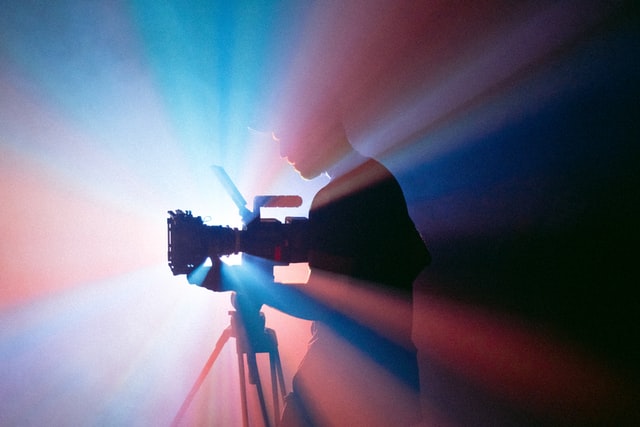
If one of your favorite hobbies is filmmaking and you’re thinking about finding a film school, wait a minute! You’ll have time to study screenwriting later. In this post, you’ll learn what basic concepts of filmmaking you can understand just by doing what you love most: watching movies. Are you coming with us? Let’s go!
Film School: Learning at Home
Indeed, if you want to become a professional filmmaker, training is something you must do. The right solution is to study at university. By contacting write my essay service, you will be helped to write a motivation letter and get a scholarship!
Today, we’re going to introduce you to some concepts that you can use to get you started on one of your passions – watching movies. And read the post, of course. Here’s a brief explanation of some cinematic concepts and the impact they have on the viewer. And which, of course, you can now learn:
Light
Light is one of the most important elements in filmmaking. Through its choice, the viewer gets one sensation or the other. It is so elementary that without it, cameras couldn’t record anything – and we wouldn’t have a movie!
Cinema lighting can be divided into two main parts: soft and hard. These two big blocks, which can also be called hard and soft light, are associated with different effects and expressions. For example, and probably for cultural reasons, soft or faint light is characterized by what evokes a sense of calm, and pause, and is associated with “goodness”. On the other hand, faced with the choice of hard light, the viewer sees contrasts and loses control of details that are in the dark. A visual approach to “evil”, stress, anxiety, and drama.
On the other hand, we have to fill light (which can be filled and checked), which is related to the relief of objects closer to the camera.
In Robert Wiene’s most famous work, “The Cabinet of Dr. Caligari”, you’ll find a good example of the lighting effect.
Camera Support
While we are focused on the film, we may not notice it. But the truth is that we see differently if the images are recorded clearly, directly, fixed, or not. Obviously, if the image is moving and is unstable and wobbly, it may have been shot using a hand-held camera technique. This cinematic technique creates an effect of confusion, distress, and a sense of dizziness. If you usually watch horror movies, you probably know what this is about.
This type of camera support is also commonly used in documentaries or films that mimic reportage or amateur recordings.
Take a look at two of the most talked-about works in any film school: the first action scene in Steven Spielberg’s “Saving Private Ryan” or Daniel Myrick and Eduardo Sanchez’s “The Blair Witch Project”.
Scenes and sequences
One of the most important concepts in the film is its basic division. Or, in other words, the sequences that make it up. In both real life and movies, our brains tend to perceive life and movies as a kind of continuum.
It doesn’t matter if it has many slices or sequences connected; we will perceive it as a very frantic, fast, fleeting whole. If the scenes, on the other hand, are lengthy, it will give us a sense of depth and slowness.
On the other hand, one of the resources most worked on in film school is the sequential shot. It is one of the most challenging features of the film. Works that use this technique tell the whole story in one frame. No cuts. No sequences.
See how you feel when you watch some of these films known for their sequential shots: Alejandro G. Iñárritu’s “Birdman”, Orson Welles’ “Touch of Evil”, or Alfred Hitchcock’s “Rope”.
The angle of recording
Tilt or camera angle is another cinematic concept that you should familiarize yourself with before attending any film school. Also, by watching any film, you can see how strong it is in certain situations. The degree to which the camera shoots a particular sequence is never a random decision. We can find up to 6 different types of angles:
- Neutral: The camera is accurately centered relative to the eyes of the specific subject being shot.
- Zenith: This is when we can see everything from the sky. We can see what’s going on underneath. A typical scene is when we see a giant forest from the sky.
- Nadir: The same as the zenith, but in the opposite direction. The camera shoots the main character or subject from the ground, focusing on everything above it. This is the type of shot that conveys a special drama.
- Low angle shot: The camera is positioned slightly below the character’s eyes. Therefore, we see him/her slightly from below.
- Choppy: The camera records what’s happening to the character just above his or her eyes.
- Subjective: The camera lens becomes the eyes of the character. It follows everything the main character has to look at.
Watch the movie “Citizen Kane” by Orson Welles, which is considered one of the greatest works in history. You will notice the angles he uses in every scene.
Use of Sound
Any film school makes it clear: The proper use of sound, like music, is necessary and of the utmost importance. In this day and age, proper care is essential. It is also necessary to understand that there are silences that also seek to convey something. Contemplating a very dramatic scene without sound is not the same as another with various voices playing in the background to simulate memories.
We recommend Brian de Palma’s “Blow”, as it is widely acclaimed for its use of sound.
Did you already know something from this article? Share your experiences with us!